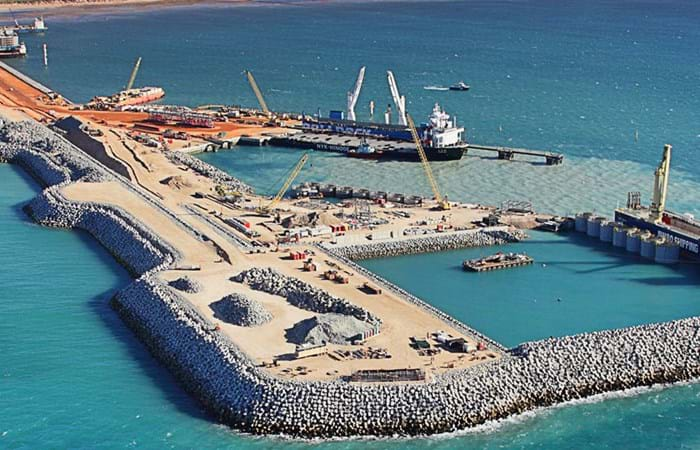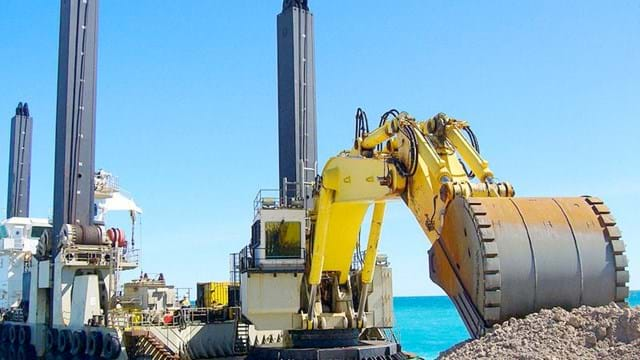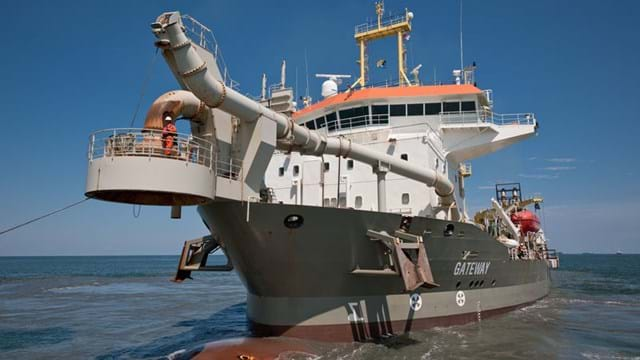Design and construction of a new port and materials offloading facility in a class 'A' nature reserve. The project owner is developing LNG process facilities on Barrow Island off the north west coast of Western Australia approximately 140 km west of Dampier and 95 km north east of Onslow. Barrow Island is a Class A Nature Reserve and an internationally important conservation estate.
Scope of work
Boskalis’ scope of work on the project included:- Detailed design and construction of a Pioneer Materials Offloading Facility (PMOF).
- Design and construction of abutment structures for a Ro-Ro berth, module carrier berth and barge berth.
- Design and construction of mooring dolphins and access walkways for the PMOF barge berth, module carrier berth and Ro-Ro berth.
- Dredging and reclamation work for the approach channel, turning basin and berth pockets associated with the construction of the MOF.
- Dredging for the LNG jetty area including an approach channel, turning basin and berth pockets.
- Installation of temporary and permanent navigation aids including two permanent front and rear lead support structures.
- Provision and operation of a Marine Construction Support Vessel to accommodate personnel involved in the Project.
- Construction of the Eastern Materials Offloading Facility (EMOF) causeway including all armour rock, construction of a breakwater, placement of X-blocs and installation of concrete nib wall.
- Compaction of the EMOF (Cofra).
- Materials testing (Boskalis Environmental).
Dredging and reclamation works
The dredging works consisted of 2 major parts:- A MOF access channel and turning basin to create access for heavy load transport vessels to bring in construction materials and large modules for the construction of the LNG plant on Barrow Island.
- An access channel and turning basin for the LNG carriers once the plant is operational.
Rock protection and breakwater works
These works consisted of 3 major components:- Design and construction of a protection of the MOF platform against cyclonic waves with rock only.
- Construction of a protection of the EMOF platform against cyclonic waves with rock underlayers and concrete X-blocs.
- Construction of a breakwater for protection of a tug harbour against cyclonic waves with rock underlayers and concrete X-blocs.


